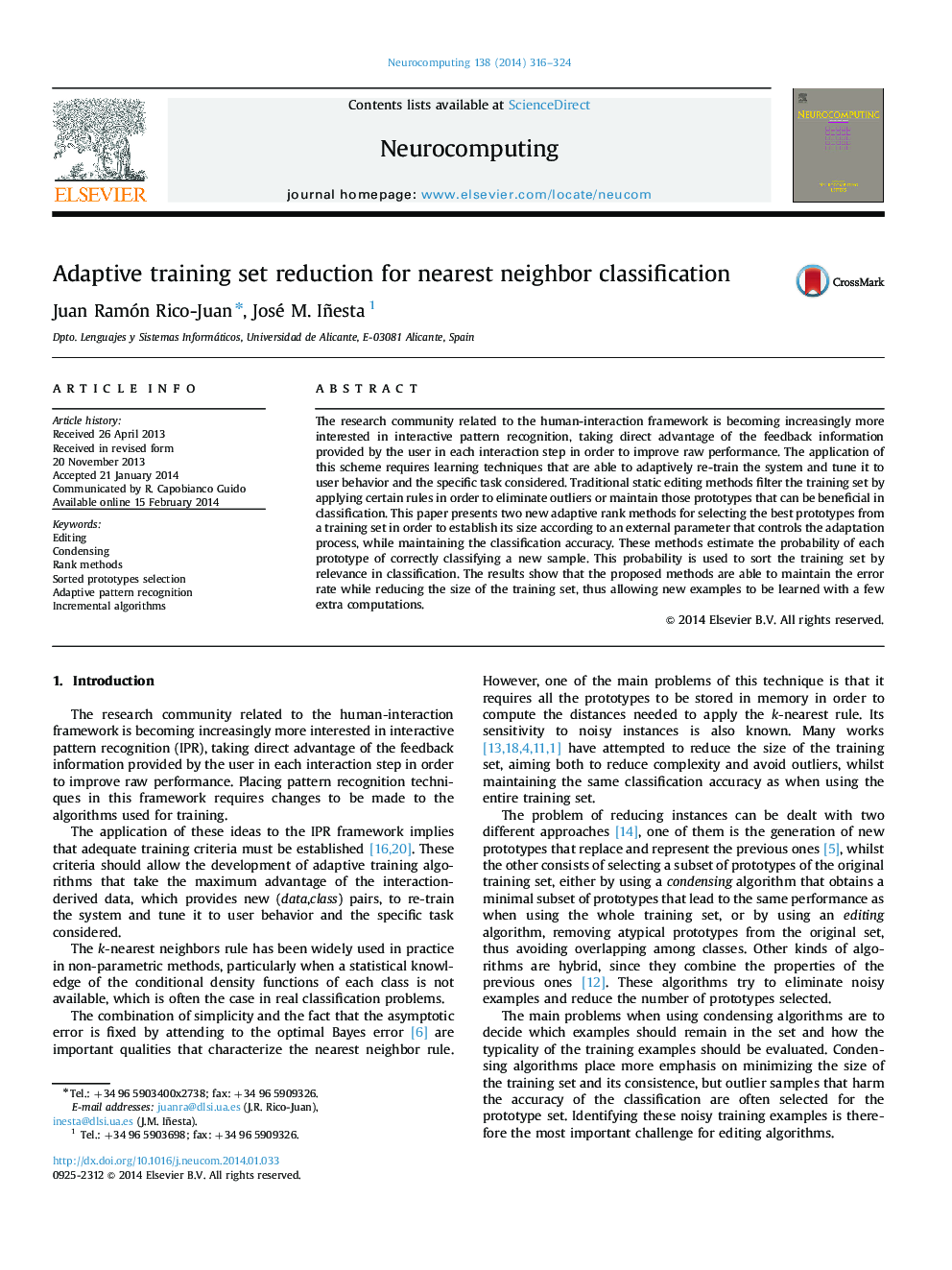| کد مقاله | کد نشریه | سال انتشار | مقاله انگلیسی | نسخه تمام متن |
|---|---|---|---|---|
| 406536 | 678092 | 2014 | 9 صفحه PDF | دانلود رایگان |
The research community related to the human-interaction framework is becoming increasingly more interested in interactive pattern recognition, taking direct advantage of the feedback information provided by the user in each interaction step in order to improve raw performance. The application of this scheme requires learning techniques that are able to adaptively re-train the system and tune it to user behavior and the specific task considered. Traditional static editing methods filter the training set by applying certain rules in order to eliminate outliers or maintain those prototypes that can be beneficial in classification. This paper presents two new adaptive rank methods for selecting the best prototypes from a training set in order to establish its size according to an external parameter that controls the adaptation process, while maintaining the classification accuracy. These methods estimate the probability of each prototype of correctly classifying a new sample. This probability is used to sort the training set by relevance in classification. The results show that the proposed methods are able to maintain the error rate while reducing the size of the training set, thus allowing new examples to be learned with a few extra computations.
Journal: Neurocomputing - Volume 138, 22 August 2014, Pages 316–324
